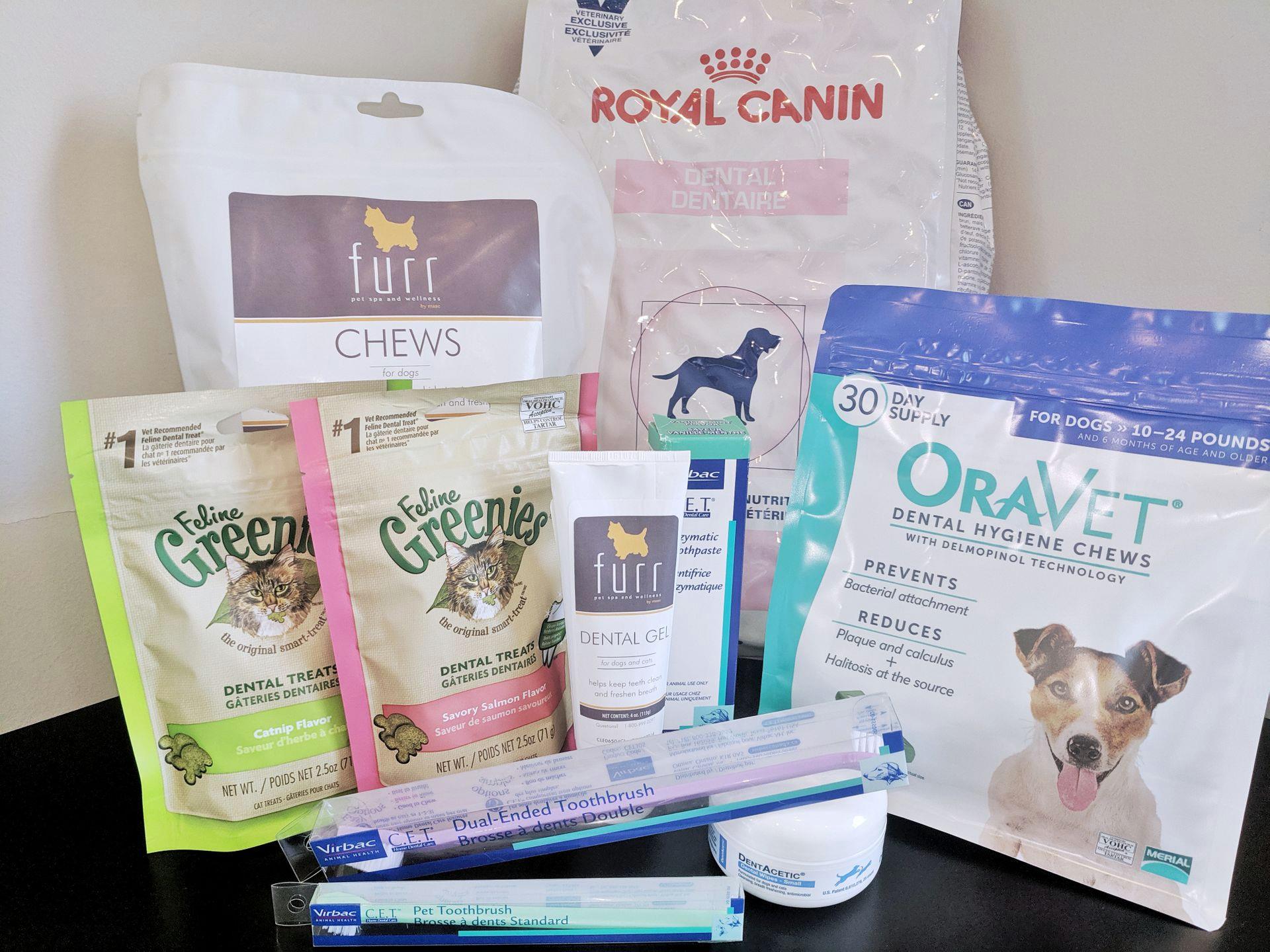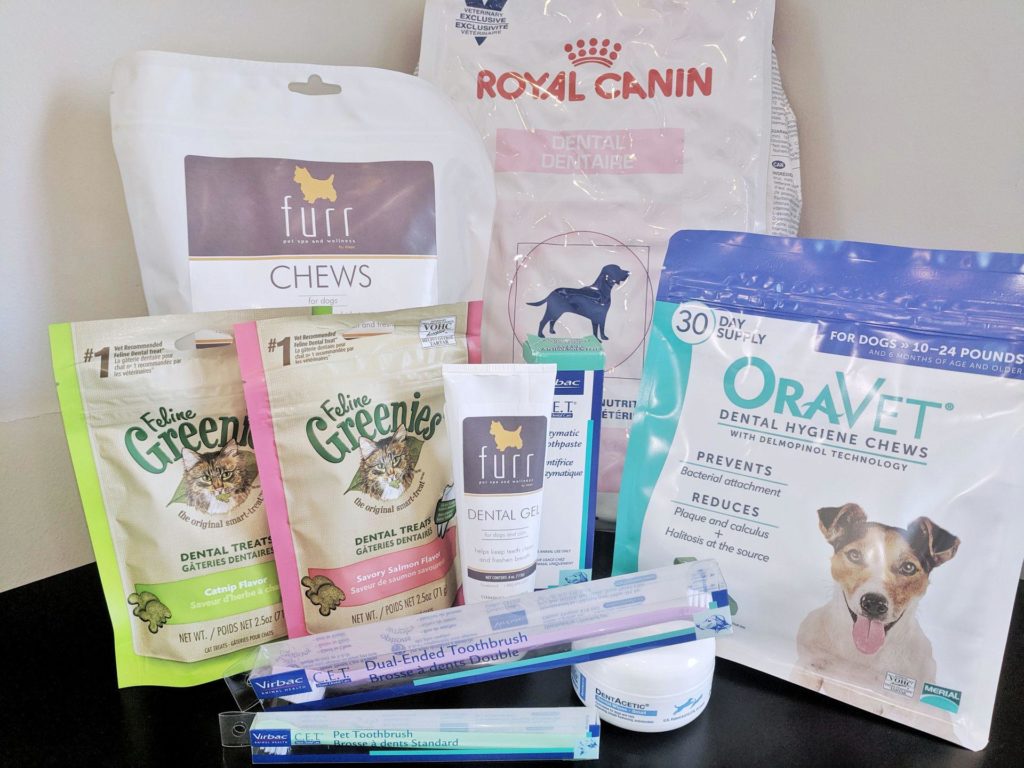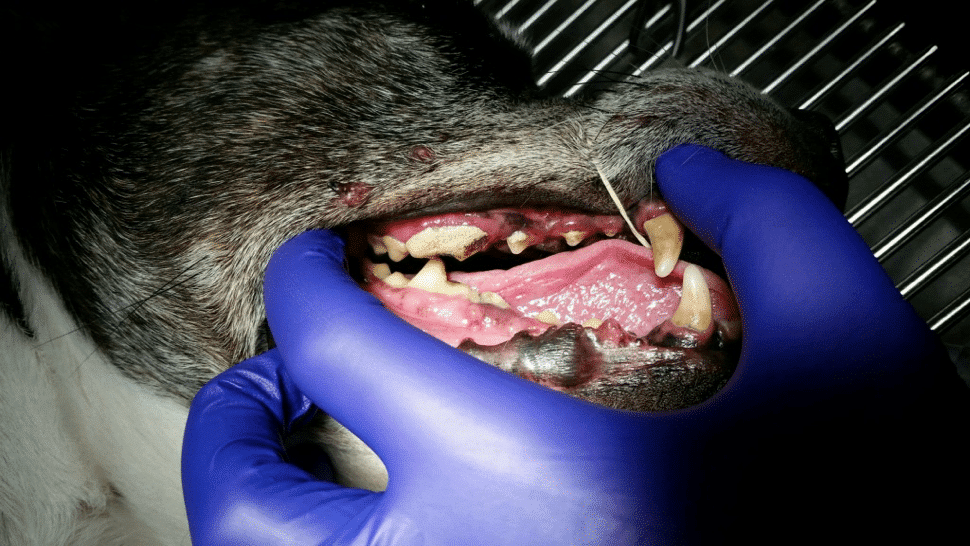
Dental Disease in Pets – Your Breath Smells Like What?
Dental disease is the most commonly diagnosed health condition in both adult dogs and cats. By three years of age, a large percentage of dogs and cats show some evidence of dental disease with either the presence of bad breath, accumulation of tartar, or inflammation of the gums. There are steps pet owners can take at home to prevent dental disease from occurring, but once it reaches a certain point, professional cleaning by your veterinarian is warranted to avoid other serious health complications.
An at home oral hygiene regimen can make a big difference in your dog’s overall health and well being! There are many different options to choose from when deciding how best to prevent dental disease from occurring in your pet and often times a combination of different methods give the best results.
Brushes and toothpaste
- Brushing your pet’s teeth is the most effective way to keep oral health optimal between professional dental cleanings. Daily brushing is recommended to keep the bacterial film, better known as plaque, from building up. Some pets initially resist having their teeth brushed, so it is best to start with brushing a small area at a time for a few days and gradually working on brushing a larger area.
- Toothbrushes designed for dogs are often angled to assist in brushing the back teeth and contain softer bristles. Some dogs tolerate brushes designed to slip over the owner’s finger. There are pet-specific toothpastes that come flavored that pets accept such as chicken or seafood. Human toothpastes are not recommended and can have adverse effects on pets.

Diets and Chews
- There are several pet foods on the market designated as dental formulated diets that have been shown to decrease the amount of tartar allowed to build up on the teeth. Some of these kibbles are designed with specific shapes to keep tartar off the teeth, while others have anti-tartar ingredients formulated into them.
- Products such as Greenies and DentaSticks are special treats on the market that are formulated for both dogs and cats to help reduce tartar build up as well as promoting fresh breath. Pets should always be supervised with such treats to make sure large pieces are not broken off and unintentionally swallowed by the pet.
- Chew toys can be helpful if chewed on a frequent basis to promote scraping or brushing along the teeth so the layer of plaque does not build up. However, products that are too solid, such a hard nylon, are not recommended as they can often lead to fractured teeth or cuts to the gums.
Professional Dental Cleaning

Professional dental cleanings performed by licensed veterinarians are often necessary at some point in the life of a pet. With at home dental care, these can be spaced out to every few years, but in certain breeds, such as Chihuahuas, Yorkshire Terries, Poodles, and Greyhounds, dental cleanings are typically needed every year. When dental disease becomes overwhelming, the bacteria present in the mouth can easily travel throughout the body and eventually cause both heart failure and kidney failure.
Pets do have to go under very light, general anesthesia to facilitate thorough scaling and polishing of the teeth. The gum line is also probed at each tooth to check for gingival recession, as well as any deep pocket formation – both indicating a possibility of further disease of that associated tooth. When the infection and bacteria have been present for enough time, they will eventually erode away the structures present for keeping the teeth in place and protected. In these instances, extraction of teeth are performed. Otherwise, they can lead to difficulty and pain while eating, or abscess formations.
Final Thoughts
All pets have the ability to acquire dental disease at some point in their life, but certain breeds (mentioned above) are more prone to it compared to others. At home dental care can help minimize the likelihood of this occurring in pets. If dental disease is present, a visit to a veterinarian is recommended and a treatment plan can be formulated based on that patient’s needs and level of disease.
